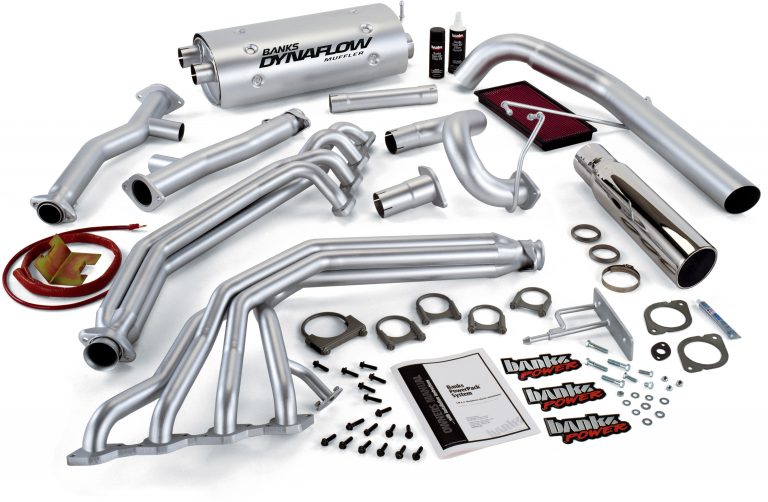Banks Power for Workhorse
At close to 500 cubic inches, the GM 8.1L Vortec in the Workhorse chassis is already the most powerful gasoline motorhome going. So how did the Banks engineers figure out how to get 22% more power out of it? That’s 66 more horsepower and 77 more lb.-ft. of torque. They did it the way we always do—by building prototypes and testing them exhaustively to see what really works best in the real world. That’s why it always takes a little time for us to introduce new products for new vehicles. There are no instant solutions here. But the news this week is that we now have Banks Power available for the 8.1L Vortec in the Workhorse motorhome chassis at both the PowerPack and Stinger levels.
More specifically, Banks uses the same methodology for achieving power increases in nearly all applications: more airflow in, more airflow out. Both the PowerPack and Stinger systems include a Ram-Air intake filter to flow more and cooler air into the engine. It lasts a lifetime and doesn’t need servicing until 50,000 miles (servicing kit included). On the exhaust side, the Banks all-stainless, heat-shielded Dynaflow muffler (no, it doesn’t come from an old Buick; we make them specifically for each application), increases exhaust flow—that is, decreases backpressure—by 65% overstock. Behind that, our mandrel-bent, stainless steel, 4-inch diameter Monster Exhaust slashes backpressure a full 70% over the stock tailpipe. These are impressive numbers that anyone could claim, but we have accurate test data to prove it.

The PowerPack system also includes our stainless steel, mandrel-bent TorqueTube exhaust manifolds with machined 5/8-inch thick flanges for gasketless mounting. If you’ve ever run regular exhaust headers on a vehicle—especially in areas where they salt the roads in winter and especially in hot environments like a motorhome engine housing, you know that they are prone to rusting and warping, which leads to blown gaskets and lots of noise. Our TorqueTubes don’t do that. They’ll last virtually a lifetime. And they’re even designed to protect your spark plug wires (have you priced a set of those lately?).
Being a hot rodder, this last part is what always amazes me. If you take the hot rod approach, with more cam and compression and ignition and carburetion to make more power, you have to expect a decrease in fuel economy, an increase in coolant temperature, such things as a rough idle and noisy exhaust, and general abuse of components in your engine such as bearings, valves, pistons, rings, and cylinder walls. But the Banks approach—increasing airflow—does just the opposite. It actually lowers the engine’s operating temperature, which both increases the density of the air charge for more power and reduces wear and tear on the engine. And it also increases fuel economy. How can you increase power and increase fuel economy at the same time? That seems impossible for someone like me. But Banks does it by increasing the engine’s efficiency. Gasoline engines, in particular, are highly inefficient. They lose power-sucking air in, compressing it, and pushing it out (pumping losses); through heat to the coolant; through heat out the exhaust; and to moving parts (friction and inertia). Reduce any of these losses, and you both increase power to the driveshaft and you decrease the amount of fuel needed to make that power. It’s called a win-win situation. And in a big motorhome like a Workhorse, you know you could use some more power—especially when you’re entering an on-ramp or climbing a grade—and you definitely could use some help in the gas mileage department. Come to think of it, the new Banks PowerPack and Stinger systems for the Vortec 8.1L V8 not only last a lifetime, but they’ll also pay for themselves over that lifetime. That sounds like a win-win situation, too.

